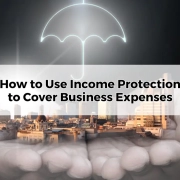The Benefits of Income Protection for High-Income Earners
Table of Contents
ToggleIn a world full of uncertainties, securing your financial future is paramount. For high-income earners, the stakes are even higher. Income protection insurance provides a safety net, ensuring that a sudden loss of income does not derail your financial stability. This blog post explores the multifaceted benefits of income protection insurance, particularly for high-income earners in Australia.
Understanding Income Protection Insurance
Income protection insurance is a policy designed to replace a portion of your income if you are unable to work due to illness or injury. Typically, it covers up to 75% of your pre-tax income, providing a steady stream of income during periods when you cannot work. This ensures that you can meet your financial obligations and maintain your lifestyle even in challenging times.
Risk Management for High-Income Earners
High-income earners often have significant financial commitments, including mortgages, car loans, and private school fees. Losing a substantial income can be devastating, making risk management essential. Income protection insurance mitigates this risk, offering peace of mind that your financial future is safeguarded.
Tax Deductible Premiums
One of the most compelling benefits of income protection insurance for high-income earners is the tax deductibility of premiums. In Australia, the premiums paid for income protection insurance are generally tax-deductible, which can substantially reduce the net cost of the policy. This tax advantage makes income protection an even more attractive proposition.
Maintaining Lifestyle and Financial Commitments
Income protection insurance ensures that you can continue to meet your financial commitments and maintain your lifestyle. It provides a reliable income stream to cover everyday expenses, mortgage repayments, and other financial obligations. This stability is crucial for your family, allowing them to maintain the standard of living they are accustomed to without financial stress.
Customising Your Coverage
High-income earners can benefit from tailoring their income protection policies to meet their specific needs. This includes choosing the right benefit period, which can range from two years to up to age 65, and selecting an appropriate waiting period. Customising your coverage ensures that the policy fits your financial situation and lifestyle.
Comparing Policies
Not all income protection policies are created equal. It’s essential to compare different policies based on factors such as premiums, benefits, and exclusions. Evaluate the insurer’s reputation and financial stability, and consider the policy’s flexibility to adapt to changing circumstances.
The Role of Financial Advisers
Navigating the complexities of income protection insurance can be challenging. Engaging a financial adviser can provide valuable insights and help you choose the right policy. A professional adviser will assess your financial situation, recommend suitable coverage options, and ensure that you understand the policy’s terms and benefits.
Case Studies
Real-life examples underscore the importance of income protection insurance. Consider a high-income earner who suffered a serious illness and was unable to work for several months. Thanks to their income protection policy, they received regular payments that covered their living expenses and medical bills, allowing them to focus on recovery without financial stress. Such cases highlight the practical benefits of having a robust income protection plan in place.
Imagine a high-income earner in Australia with an annual income of $200,000. They have wisely insured 70% of their income through an income protection policy. In the unfortunate event of illness or injury that renders them unable to work, their insurance will cover $140,000 per year. This amount, although taxable at Australian rates, still provides substantial financial support compared to relying solely on government entitlements.
Income Breakdown and Taxation
When the insured individual begins to receive the income protection payments, this $140,000 is taxed similarly to regular income. Assuming a marginal tax rate of approximately 32.5% for this income bracket, the net income from the insurance payout would be around $94,500 annually after taxes.
Comparison with Government Entitlements
To put this into perspective, government entitlements, such as social security payments, typically offer significantly less financial support. The current maximum rate for JobSeeker Payment, for example, is considerably lower and often insufficient to maintain a high standard of living. Relying solely on such entitlements could lead to substantial lifestyle downgrades.
Maintaining Lifestyle and Financial Stability
Despite the income protection payout being less than the original $200,000 salary, receiving $140,000 (or $94,500 after tax) can be a crucial factor in maintaining a reasonable standard of living. Here are a few key areas where this income can make a significant difference:
- Housing Stability: With a substantial portion of the insured income covered, the family can continue to meet mortgage repayments. This security can be the difference between keeping their home and being forced to sell due to financial constraints.
- Education Continuity: The income protection payout can also help cover private school fees, ensuring that children can continue their education without disruption. Without this support, the family might have to move the children to public schools, which could be a significant adjustment.
- Living Expenses: Beyond housing and education, the insured income helps cover everyday living expenses such as groceries, utilities, and transportation. This ensures that the family can maintain a standard of living closer to what they are accustomed to, rather than having to make drastic cutbacks.
- Medical and Recovery Costs: Income protection insurance also assists in covering medical bills and associated recovery costs. This reduces the financial burden during an already stressful time, allowing the insured individual to focus on their health and recovery without added financial worries.
Practical Benefits and Considerations
In this scenario, the practical benefits of having income protection insurance are clear. The policy provides a substantial financial safety net, significantly mitigating the impact of a sudden loss of income. While the payout is less than the original salary, it ensures that the family can maintain a reasonable standard of living, avoid drastic lifestyle changes, and focus on the insured individual’s recovery.
This example highlights the importance of planning and foresight. High-income earners, in particular, have more at stake and should consider the potential financial impact of unforeseen events. Income protection insurance is not just a policy; it’s a critical component of a comprehensive financial plan, ensuring that you and your family are protected against the uncertainties of life.
Common Misconceptions
There are several misconceptions about income protection insurance. Some people believe it’s unnecessary or too expensive. However, the financial impact of losing a high income far outweighs the cost of premiums. Understanding the true value of income protection insurance dispels these myths and emphasises its importance.
Income protection insurance is a vital tool for high-income earners in Australia. It offers financial security, tax advantages, and the peace of mind that comes with knowing your lifestyle and family’s future are protected. By understanding the benefits and customising your coverage, you can ensure that you are well-prepared for any unexpected events. Secure your future today with the right income protection policy and enjoy the confidence that comes with comprehensive financial protection.









